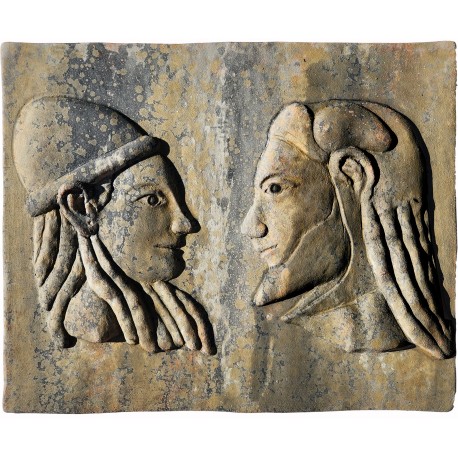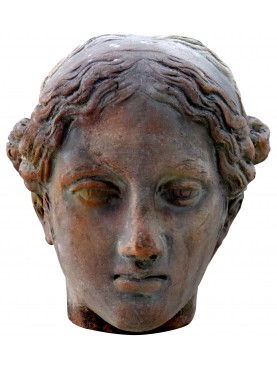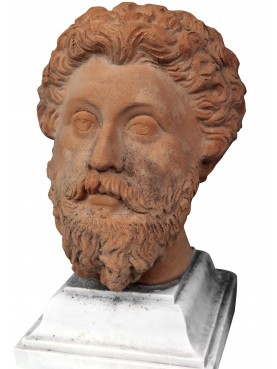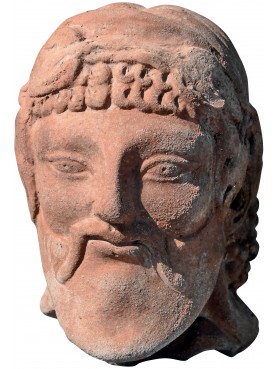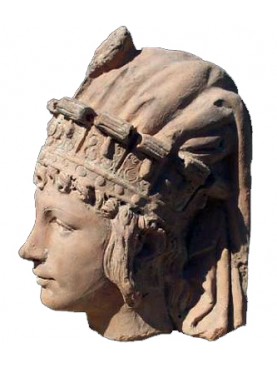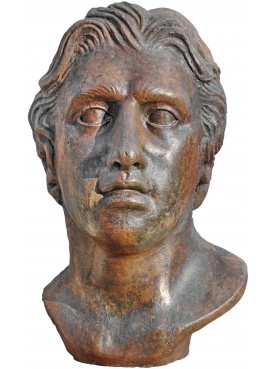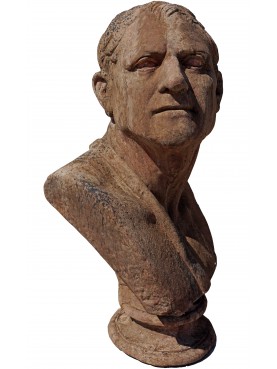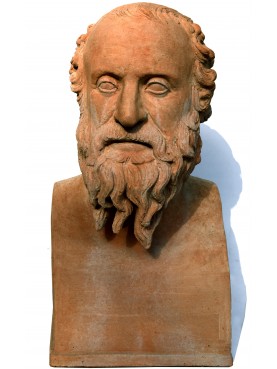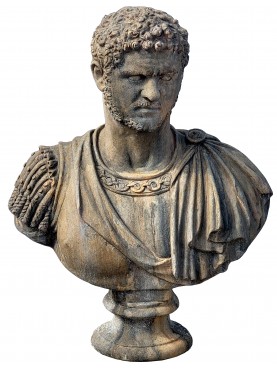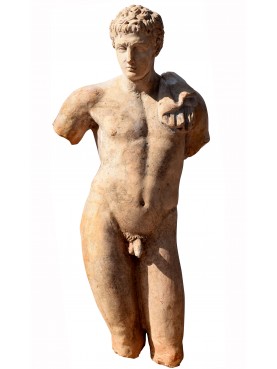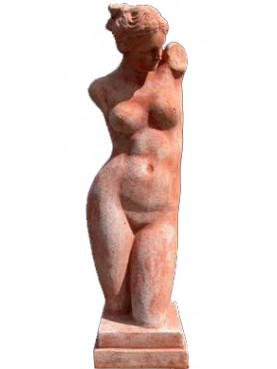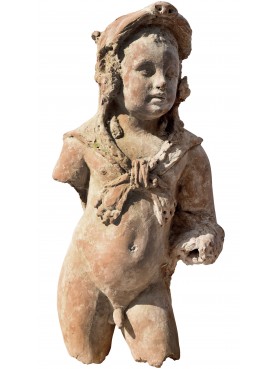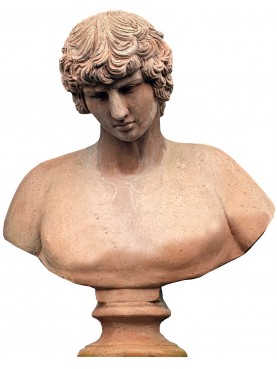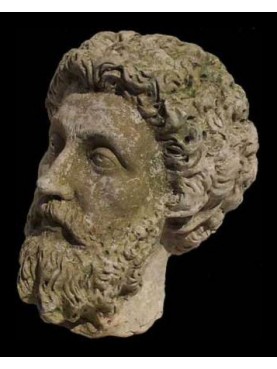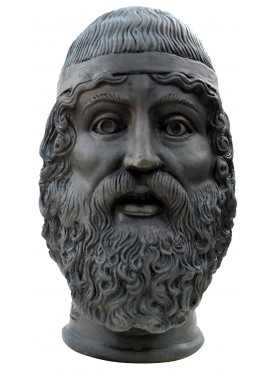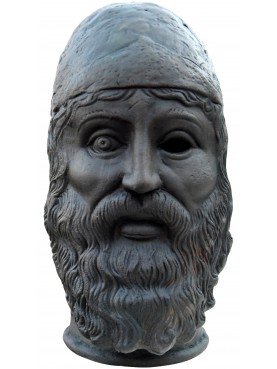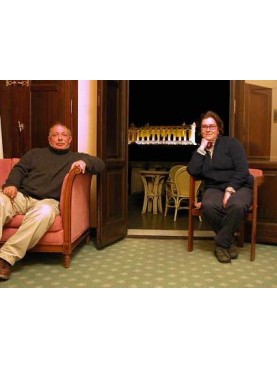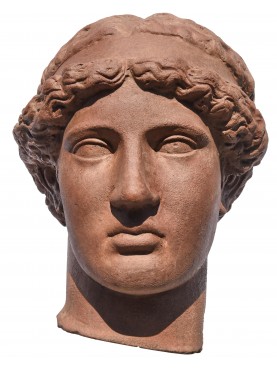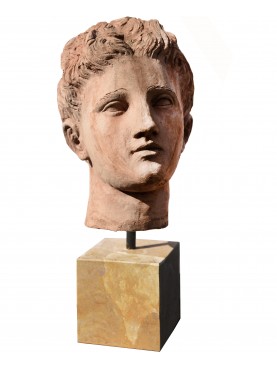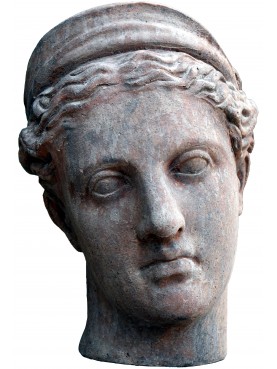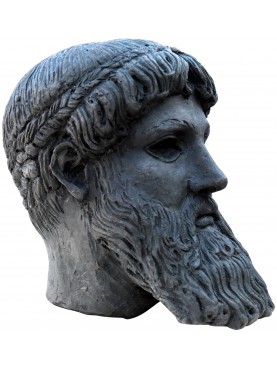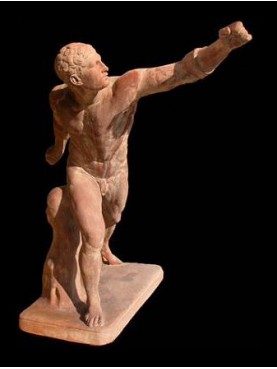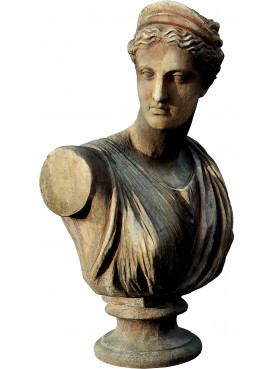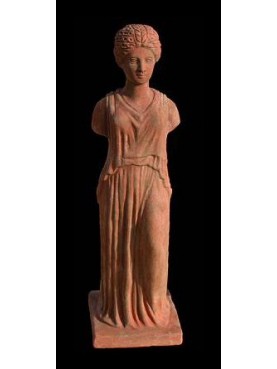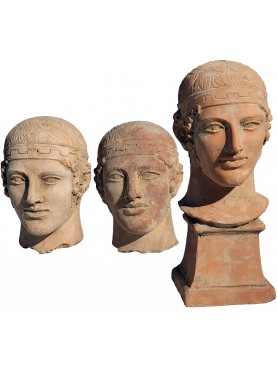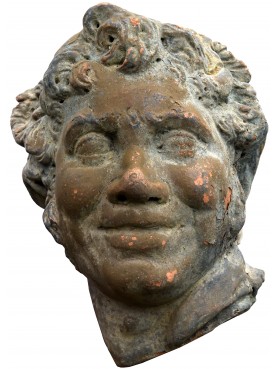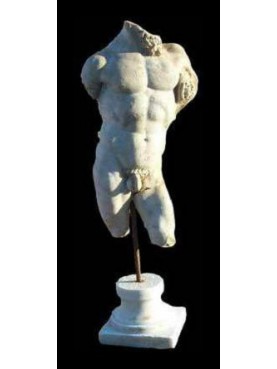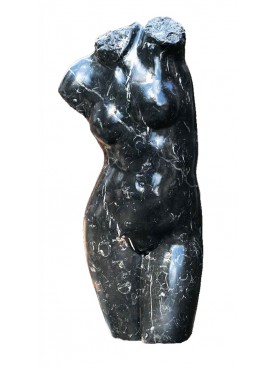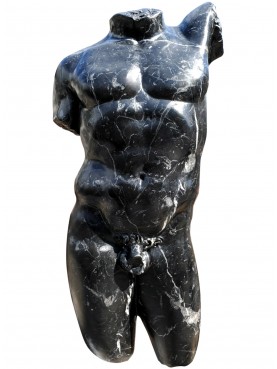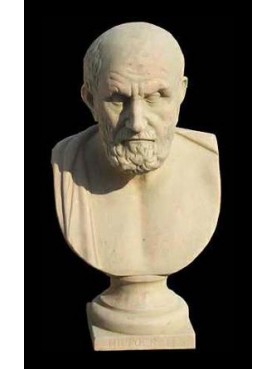Two Etruscan faces - terracotta bas-relief
Two Etruscan faces - terracotta bas-relief
14815
New
3 Available
Data sheet
| Height | 12.2 in | 31 cm |
| Width | 14.96 in | 38 cm |
| Thickness | 0.79 in | 2 cm |
| Weight | 8.82 lbs | 4 Kg |
| Historical period | VI century b.C. | |
| Manufacturing | Recuperando srl | |
| Material | Terracotta | |
| Museum where the Original is exhibited | National Etruscan Museum of Villa Giulia in Rome |
More info
THE SARCOPHAGUS OF THE SPOUSES
The sarcophagus of the spouses is an Etruscan terracotta sarcophagus dating back to the 6th century BC, preserved in the National Etruscan Museum of Villa Giulia in Rome.
The sculpture portrays a married couple reclining in a triclinium at a banquet. Both figures have long hair, elongated eyes. The woman wears a characteristic headdress and a pair of sandals on her feet, while her husband has a long, pointed beard. The woman's white arms represent her political and social importance. The construction of the sarcophagus required the search for several pieces, which were then joined, modeled and painted with the addition of details.
The sculpture was found in 400 fragments in 1881 during excavations in the Banditaccia necropolis in Cerveteri.
The two spouses are depicted semi-reclining on a klìne (pronounced: clìne), a bronze double bed covered with fabrics and cushions, on which the guests reclined during the holidays. This klìne has volute legs and the spouses lie on a mattress equipped with a blanket and pillow, in a position of perfect equality, as if they were taking part in a banquet. The position of importance of women in society was not taken up by the Romans, who did not admit women to banquets, except in the imperial era.
A similar sarcophagus, formerly belonging to the collection of Giovanni Pietro Campana, is located in the Louvre Museum in Paris, acquired following the auctioning of the entire Campana collection.
NATIONAL MUSEUM OF VILLA GIULIA ROME
The National Etruscan Museum of Villa Giulia, also known as ETRU, is an Italian state museum dedicated to the Etruscan and Faliscan civilizations housed in the rooms of Villa Giulia and Villa Poniatowski in Rome. Owned by the Ministry of Culture, since 2016 it has been included among the museums with special autonomy.
With headquarters in the Renaissance villa of Pope Julius III (built as a suburban residence between 1551 and 1553 from a project by Jacopo Barozzi known as il Vignola, Giorgio Vasari and Bartolomeo Ammannati, the national Etruscan museum was founded in 1889 to bring together all the pre-Roman antiquities of Lazio, southern Etruria and Umbria belonging to the Etruscan and Faliscan civilizations.
In 2012, the National Etruscan Museum of Villa Giulia also opened some rooms inside the nearby Villa Poniatowski, a historic papal annex.
The expansion and adaptation interventions were also carried out thanks to the Lotto game, on the basis of the provisions of law 662/96.
Through an international tender established following the Franceschini Reform, in May 2017 the director of the museum became the Umbrian archaeologist Valentino Nizzo, reconfirmed in 2021.
The museum is the historic location of the final of the Strega Prize.
Source Wikipedia

